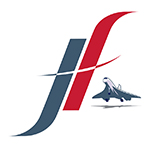After 120 years, pilots are still being taught to land by guesswork. Triangles have been around a lot longer and work much better.

The Jacobson Flare uses a logical, geometric visual ‘framework’ to guide the pilot from final approach to a perfect touchdown – every time – and in the right place.
This framework confirms to the pilot exactly what is happening at every stage, dispelling the myths that ‘trial and error‘, ‘developing a mental picture‘ and ‘feel‘ are the only ways to master the landing.
Since the development of The Jacobson Flare from 1985, pilots are presented with a fully-defined visual eye path, specified by the airplane type – making the landing safe, sure, simple and universal.
Accounting for all – even self-compensating for many – of the variable parameters that distract the attention of pilots away from the 5 essential elements of all landings: Where to aim; How to aim; When to flare; How much to flare; and How fast to flare, the Jacobson Flare explains landings as never before.
Flown initially at a constant angle, the eye path translates to the classic exponential flare curve that generations of pilots have attempted to execute by judgment alone. The flare is initiated from a visual fix, derived from the cockpit lower visual cut-off angle and the flight path angle, offering a precise and visible model for both student and instructor.
The improvement in confidence, competence and progress of pilots – at all levels – is not only breathtaking: It’s consistent and it’s measurable.
Wishing you many safe landings
Captain David M Jacobson FRAeS MAP
Would you care to experience that unsurpassed sense of accomplishment, derived from executing consistently beautiful landings, more often?
For starters, Download the FREE Jacobson Flare LITE, our no fuss/no frills introduction. Here we demonstrate, step by step, the application of the Jacobson Flare on a typical grass airstrip at Porepunkah, YPOK.
We invite you to browse the consistently positive comments on our Testimonials page. Many pilots, of all levels of experience, have downloaded our Apps. Read about their own experiences with the Jacobson Flare technique and the App.
Then download the COMPLETE Jacobson Flare app – for iOS. You’re already possibly paying $300+/hour to hire an aeroplane: You’ll recover the cost of the app, in just ONE LESS-NEEDED CIRCUIT. Moreover, you’ll have an invaluable reference tool, throughout your entire life in aviation.
Download the COMPLETE Jacobson Flare App for iOS devices now.
We invite you, also, to review our new, FREE companion app,
offering a convenient way of staying abreast of our latest blogs.
Download the Jacobson Flare NEWS App for iOS devices now.











